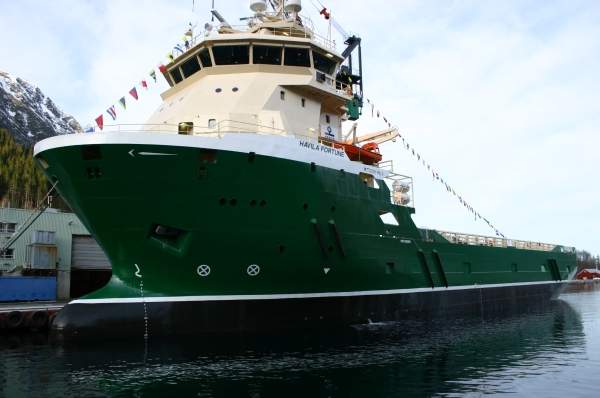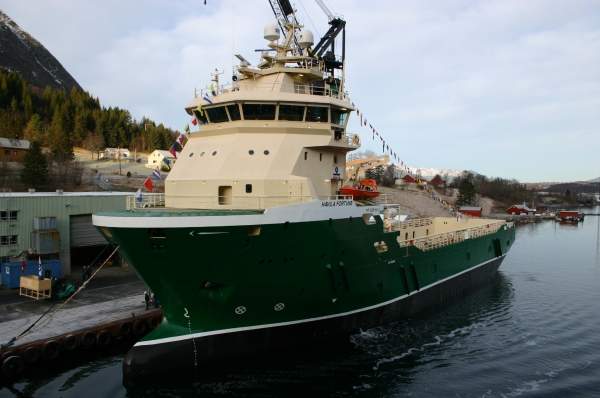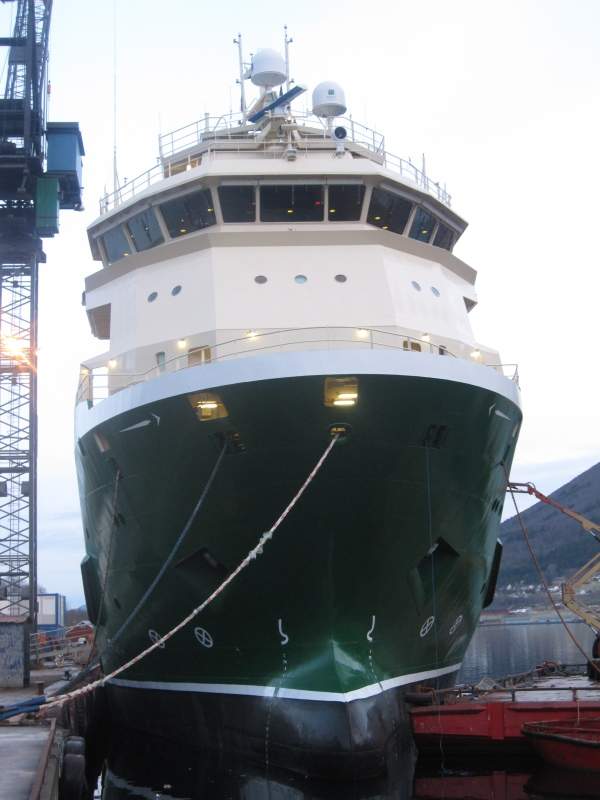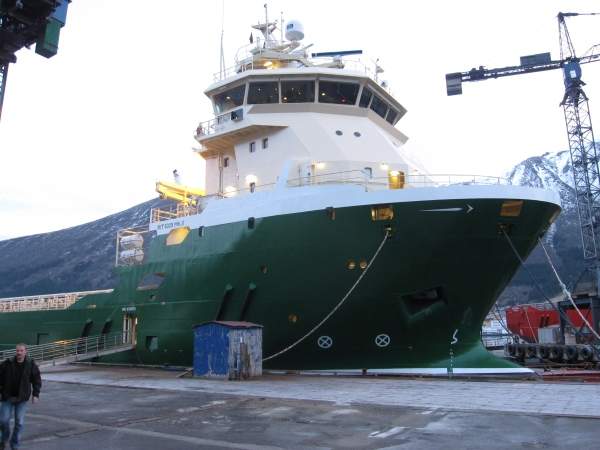Havila Fortune is a Det Norske Veritas (DNV) classified DP-2 (dynamic positioning) platform supply vessel (PSV) owned by Partrederiet Havship of Norway and operated by its subsidiary Havila Shipping.
The vessel was constructed by Havyard Tomrefjord, a subsidiary of Havyard Group, and was delivered in February 2009.
The order for the construction of the vessel was awarded in March 2006. Construction commenced with a keel laying ceremony held in March 2007. The vessel was launched in December 2007.
The hull of the vessel was manufactured by Manuel Pires Guerreiro of Portugal.
Design of Havila Fortune
Havila Fortune is of the MT 6009 MK II ship design series developed by Norway-based ship engineering services provider Marin Teknikk. The MT design series ships are well recognised for their environmentally-friendly features such as reduced fuel consumption, low exhaust emissions and low noise and vibration level.
Some other important features of the ships with this design include high safety levels, greater speed and good seagoing properties.
The gross tonnage of the Havila Fortune PSV is 2,820t, dead weight is 3,250t and net tonnage is 900t. Actual weight (light ship) of the vessel is approximately 2,110t.
She has an overall length of 74.87m. Length between perpendiculars is 67.20m. The moulded breadth and moulded depth are 16.40m and 7.45m respectively.
The maximum design draught is 6.22m. The minimum height (freeboard) of the ship’s deck above water level is 1.28m.
Accommodation and facilities onboard the platform supply vessel (PSV)
Accommodation is available for 31 persons, including officers and crew members. Onboard facilities include a mess / dayroom, two offices, a conference room, gymnasium, hospital and cool store / freezer.
Entertaining equipments include one SeaTel 5004 TV antenna, DVD-AUDIO/SACD-player and DIVX.
Cargo capacity of the Norwegian ship
The PSV has a maximum deck area of 683m2 with a cargo capacity of 1,600t. Usable deck area is 603m2 and deck strength is 5t/m2.
Tank capacity for fuel oil is 1,228m3, pot water is 639m3, ballast / drill water is 1,121m3/948m3, methanol is 205.6m3 and glycol is 1,288m3. There are five vertical tanks, each of which can store 310m3 of dry bulk.
In addition, there are six dedicated and four multi-use tanks for liquid mud, one dedicated and one multi-use tank for brine and one dedicated and one multi-use tank for base oil.
Propulsion and manoeuvring Havila Fortune platform supply vessel
The Havila Fortune is powered by four Cummins KTA5DC main engines, each of 1,291kW capacity, and four main generators, each capable of generating 1,239kW.
The vessel is also provided with a 150kW capacity harbour generator set for emergency purpose.
The vessel is fitted with four side thrusters for smooth manoeuvring. The two main azimuth thrusters, fitted aft, are of 1,500kW each. The two tunnel bow thrusters are of 800kW each.
The vessel’s position and heading are automatically maintained by Kongsberg DP-2 control system guided by a fan beam receiver, two differential global positioning system (DGPS) receivers and a joystick control system.
The vessel is set up with a deck crane. It has a safe working load (SWL) of 2t at 12m radius. Mooring equipments include two tugger winches of 10t capacity each and two capstans of 10t each. Cargo security winches are provided too.
Navigation and communication technology on Havila Shipping’s PSV
Navigation equipments include an Autopilot, a NAVIPILOT 4000 self-tuning adaptive heading control system, steering control interface unit, Gyro compass, one Magnet compasss system, one 10cm chart radar and a 3cm ARPA radar, flat screen TFT/LCD 19.1" slave AFT bridge, TelChart TECDIS system (electronic chart display and information system), TelChart backup TECDIS system, GPS GP-150, Echo sunder, Speed log and a sound signal reception system (SSRS).
The communication system comprises three GMDSS VHFs, an SSB radio, a telex terminal, NX-700 dual-channel NAVTEX receiver, simplex / semi-duplex VHF radio, Inmarsat C satellite system, Tron 40 S and Tron 45 SX emergency position indicating radio beacon (EPIRB), two radar transponders, two VHFs, eight UHFs and three mobile telephones.







